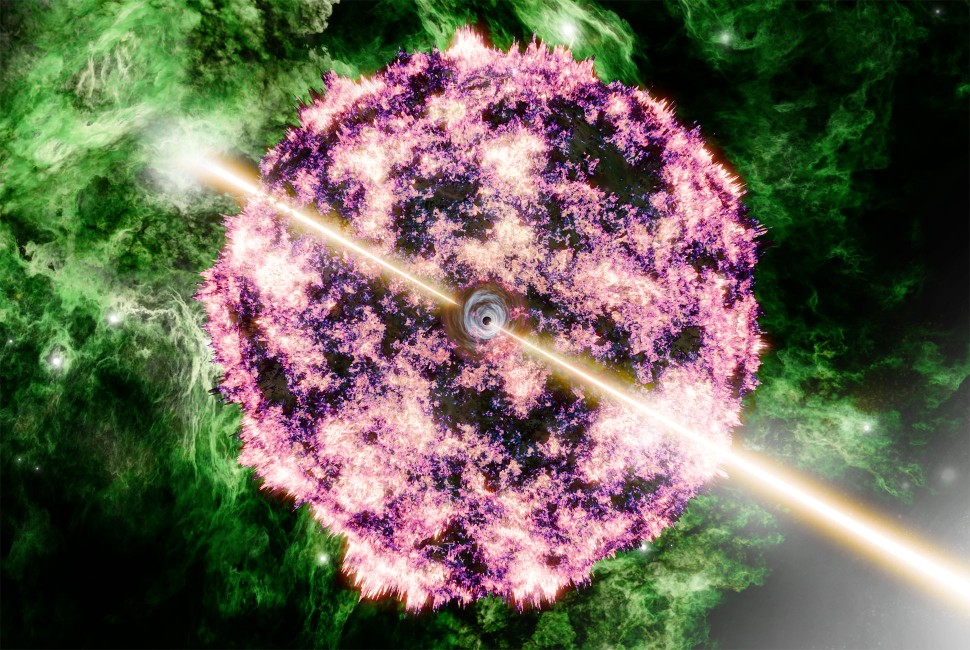JWST observations show no sign of heavy elements

Artist’s visualization of GRB 221009A showing the narrow relativistic jets (emerging from a central black hole) that gave rise to the gamma-ray burst (GRB) and the expanding remains of the original star ejected via the supernova explosion. Credit: Aaron M. Geller / Northwestern / CIERA / IT Research Computing and Data Services
In October 2022, an international team of researchers, including Northwestern University astrophysicists, observed the brightest gamma-ray burst (GRB) ever recorded, GRB 221009A.
Now, a Northwestern-led team has confirmed that the phenomenon responsible for the historic burst — dubbed the B.O.A.T. (“brightest of all time”) — is the collapse and subsequent explosion of a massive star. The team discovered the explosion, or supernova, using NASA’s James Webb Space Telescope (JWST).
While this discovery solves one mystery, another mystery deepens.
The researchers speculated that evidence of heavy elements, such as platinum and gold, might reside within the newly uncovered supernova. The extensive search, however, did not find the signature that accompanies such elements. The origin of heavy elements in the universe continues to remain as one of astronomy’s biggest open questions.
The research was published today (April 12) in the journal Nature Astronomy.
“When we confirmed that the GRB was generated by the collapse of a massive star, that gave us the opportunity to test a hypothesis for how some of the heaviest elements in the universe are formed,” said Northwestern’s Peter Blanchard, who led the study. “We did not see signatures of these heavy elements, suggesting that extremely energetic GRBs like the B.O.A.T. do not produce these elements. That doesn’t mean that all GRBs do not produce them, but it’s a key piece of information as we continue to understand where these heavy elements come from. Future observations with JWST will determine if the B.O.A.T.’s ‘normal’ cousins produce these elements.”
Blanchard is a postdoctoral fellow at Northwestern’s Center for Interdisciplinary Exploration and Research in Astrophysics (CIERA), where he studies superluminous supernovae and GRBs. The study includes co-authors from the Center for Astrophysics | Harvard & Smithsonian; University of Utah; Penn State; University of California, Berkeley; Radbound University in the Netherlands; Space Telescope Science Institute; University of Arizona/Steward Observatory; University of California, Santa Barbara; Columbia University; Flatiron Institute; University of Greifswald and the University of Guelph.
Continue to the full Northwestern news story.

